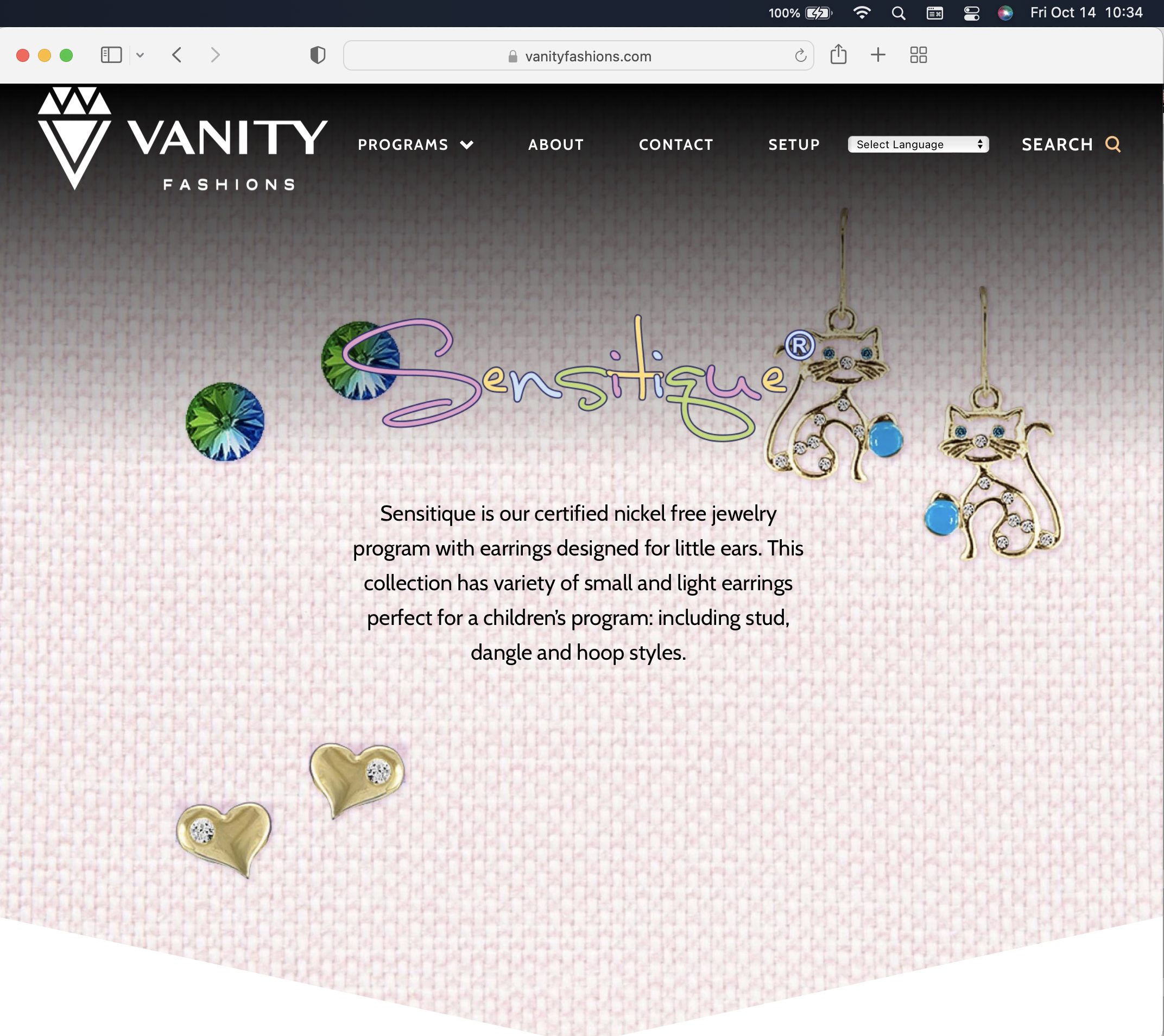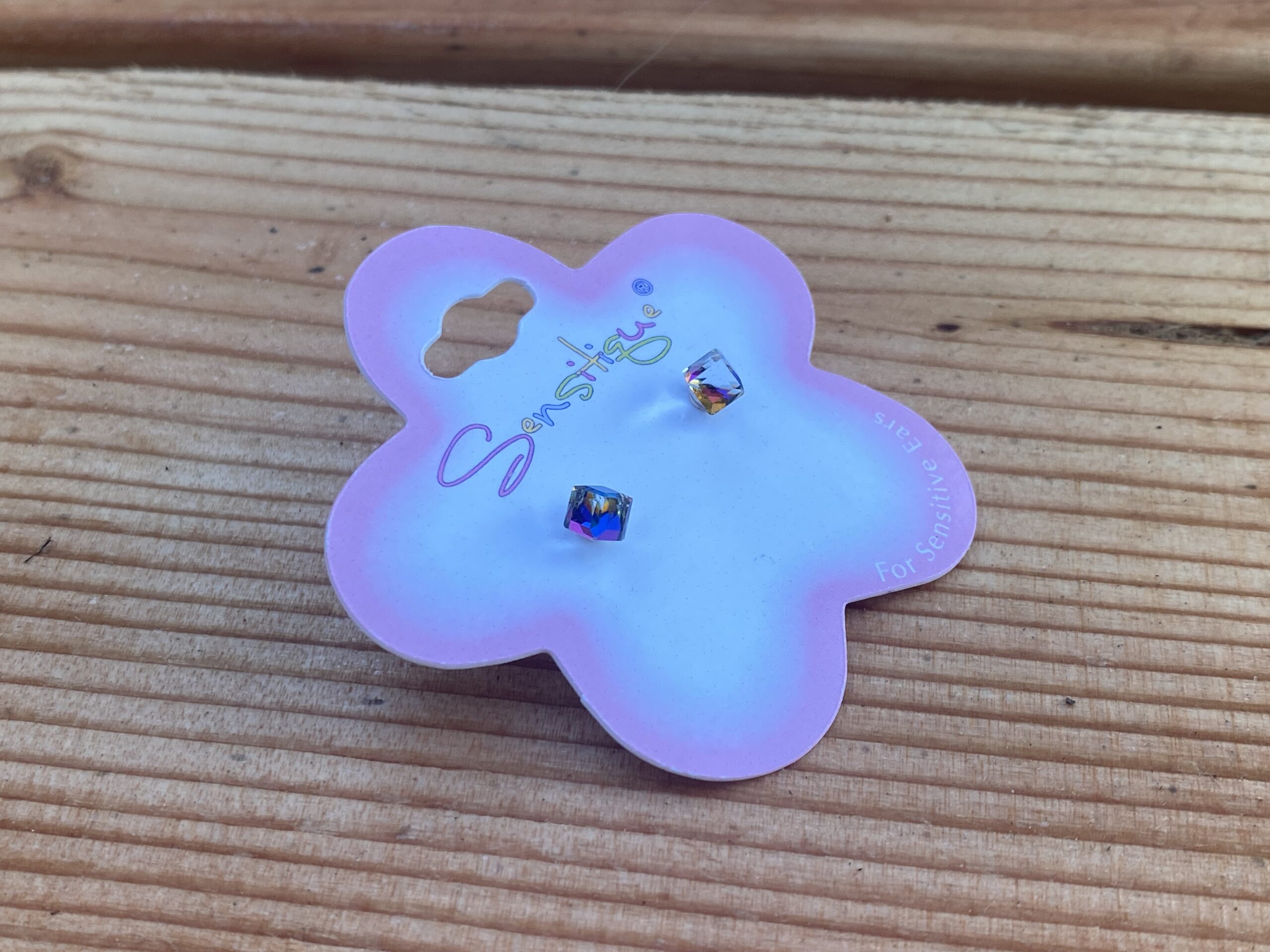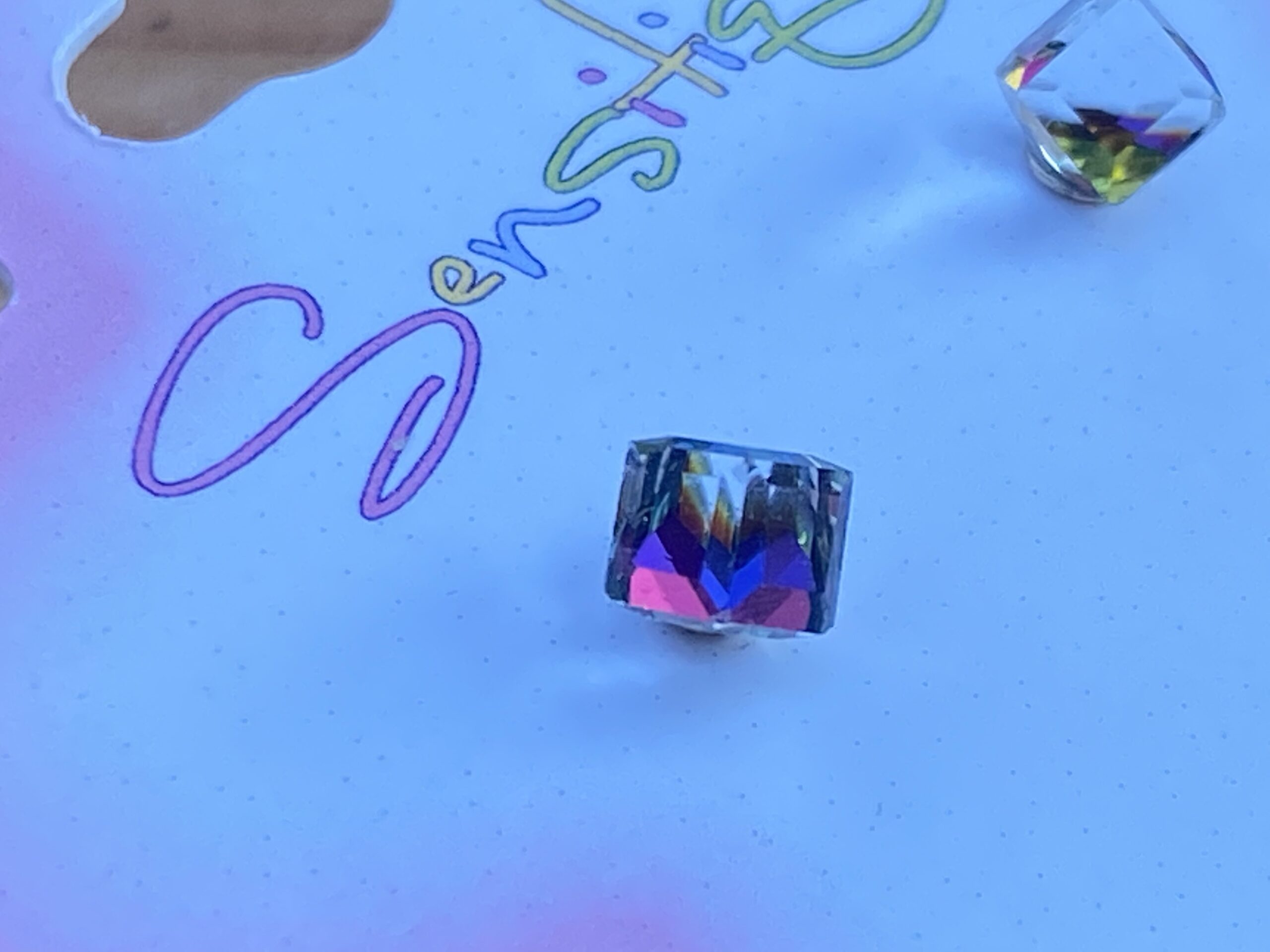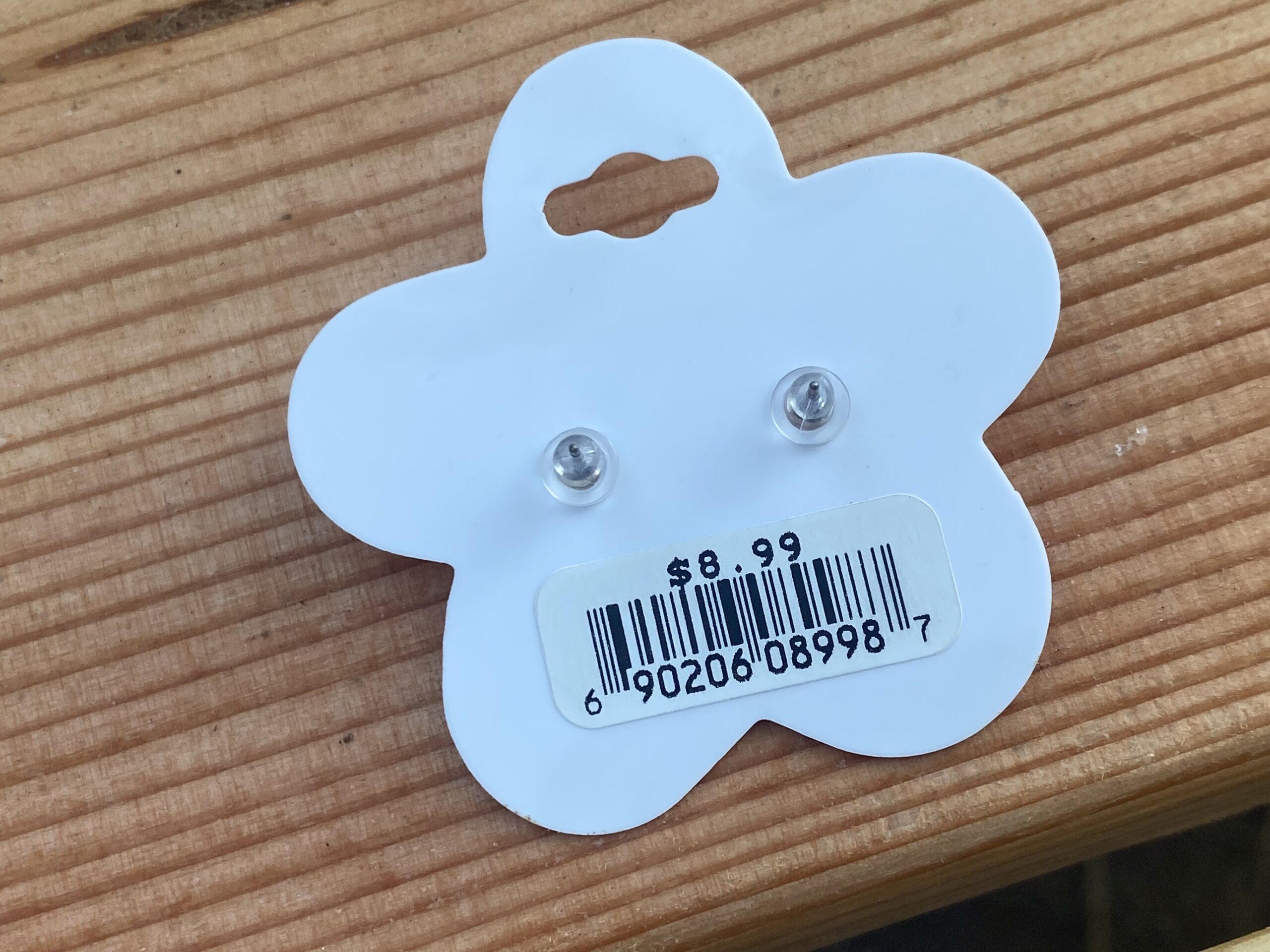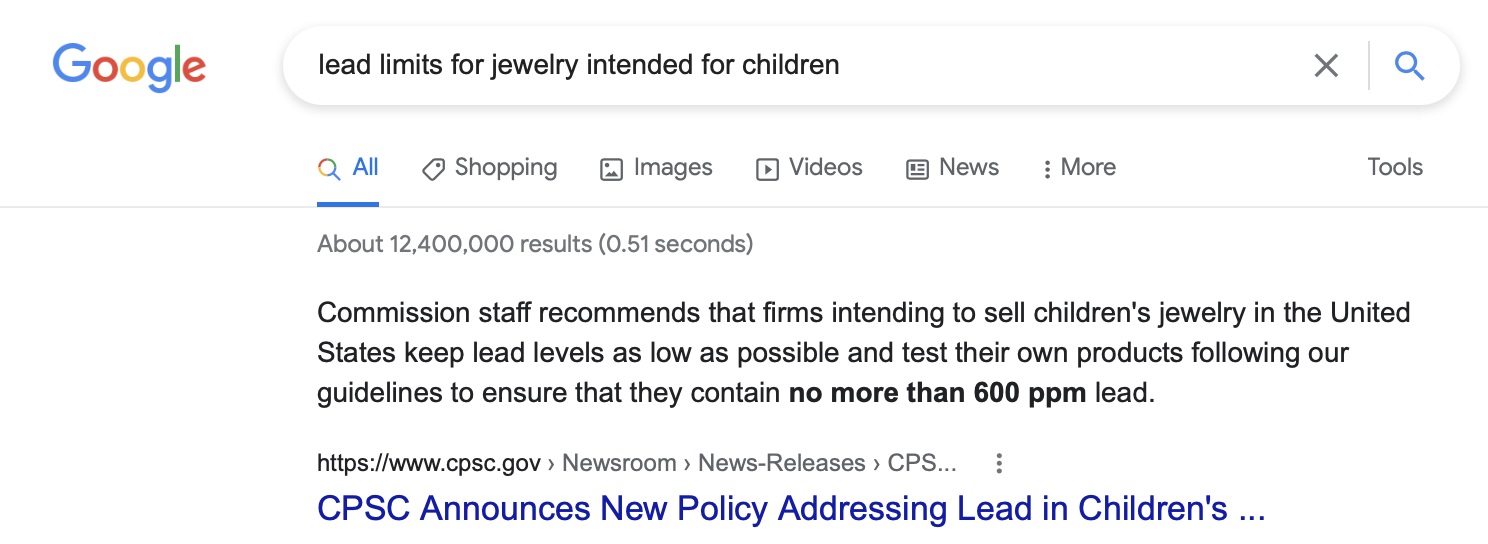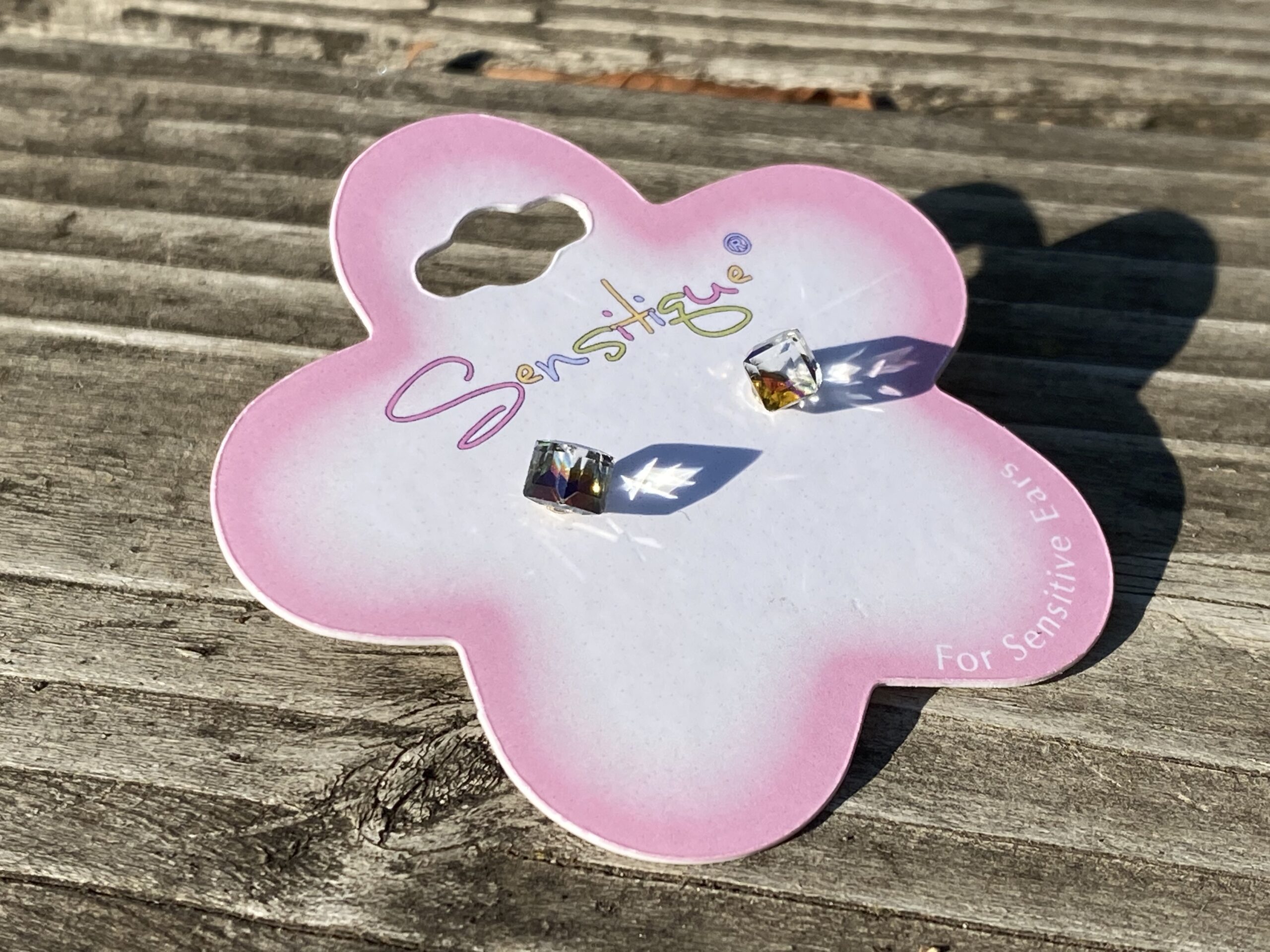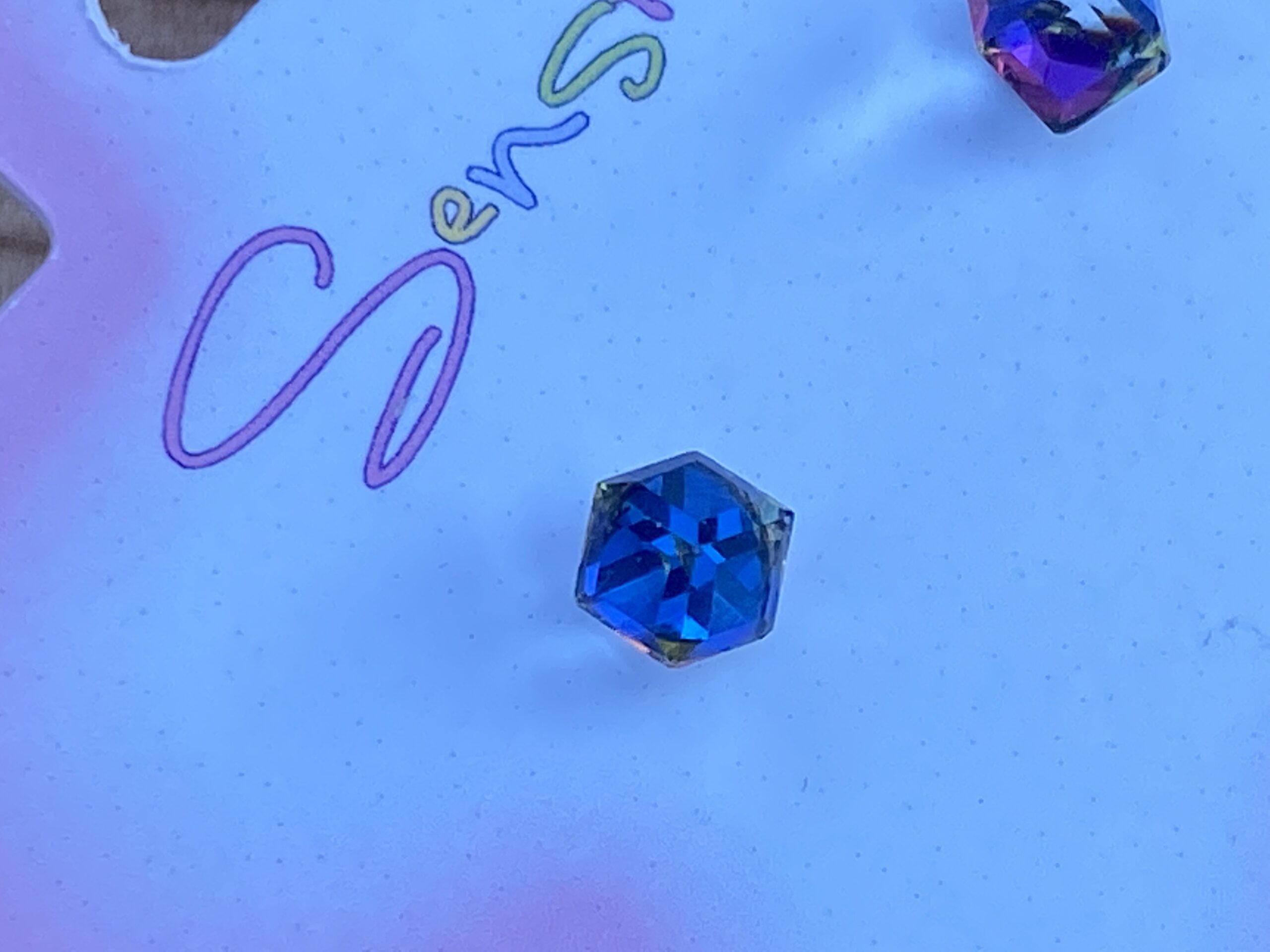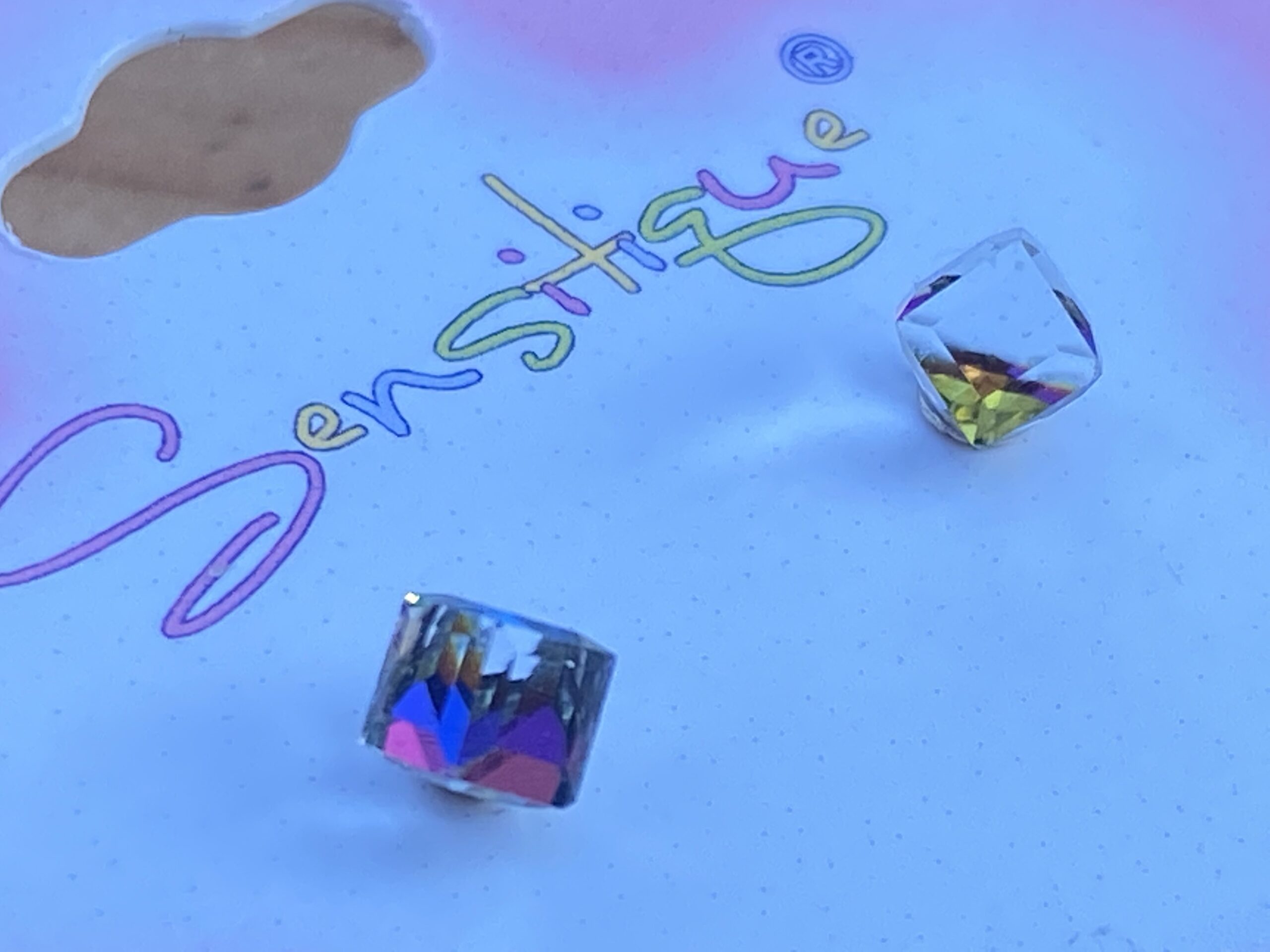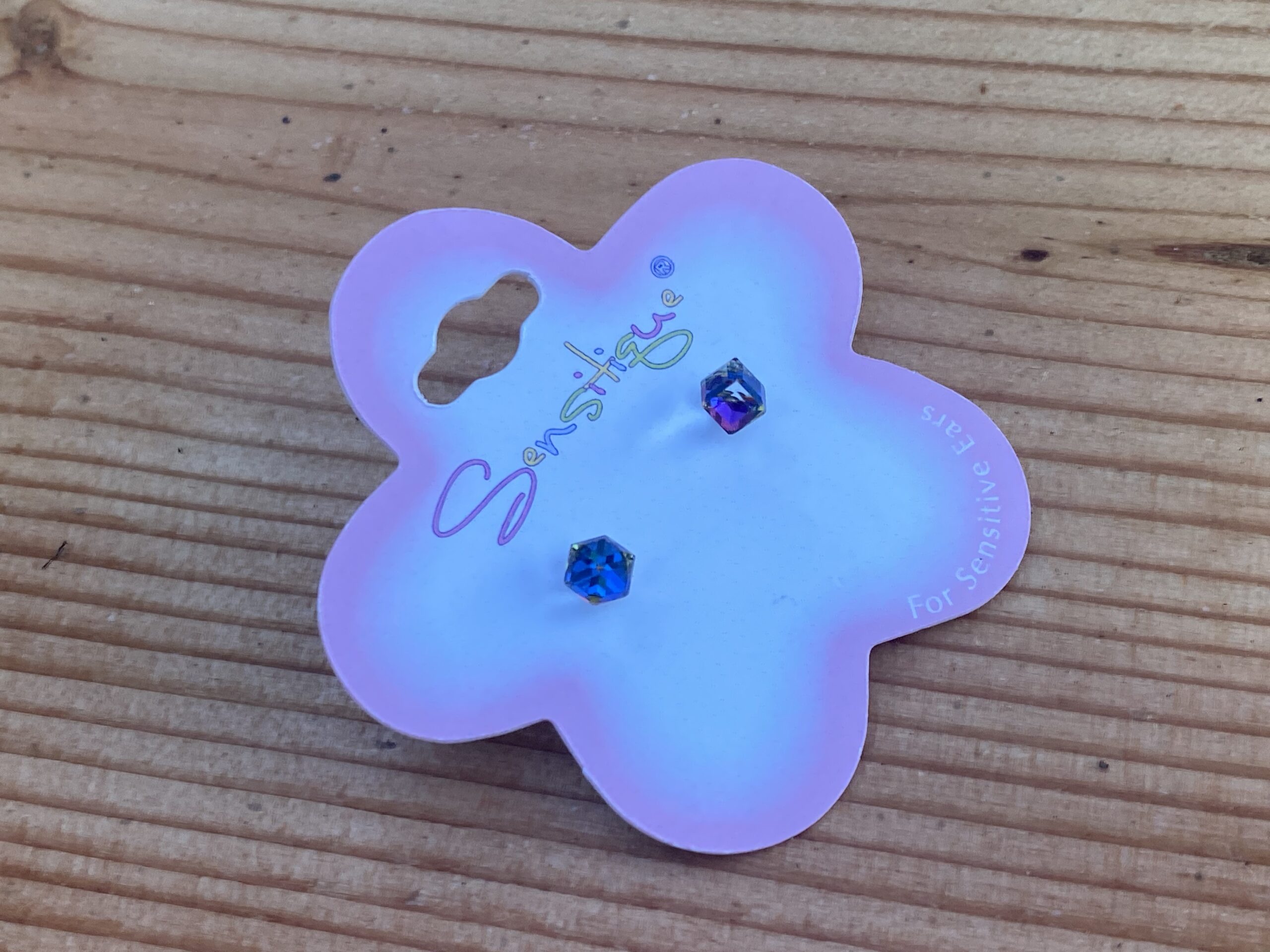Sensitique Earrings (marketed to little girls), crystal cubes – purchased in a Canada ferries gift shop: positive for unsafe levels of Lead.


 October 14, 2022 – Friday
October 14, 2022 – Friday
I bought these as a possible gift for one of my adult sons [he just got his ears pierced this summer for his birthday, and they seemed like a cute addition to his small collection of understated earrings!] They were purchased in a gift shop on a Canadian ferry in October of 2022. These small iridescent crystal cube earrings by Sensitique tested positive for 415 ppm Lead, 12 ppm Cadmium and 268 ppm Antimony (see full XRF test results set below.)
Important points and considerations:
- In the United States, the amount of Lead that is considered unsafe in the paint, coating or glaze of most items intended for use by children (for total XRF-detectable Lead content) is 90 ppm Lead or higher.
- The regulatory limits for toxicants (heavy metals) in Jewelry intended for use by children are separate (and actually less-stringent income areas – see screenshot below) — but the hazard level for Lead that is most protective of human health is the 90 ppm level.
- It’s also very possible (given the range of readings I got for these earrings across multiple tests), that the Lead in these earrings is actually in the iridescent coating of the glass (as I have found to be the case many times before) — so one might reasonably argue for that coatings limit to be particularly relevant in this case, despite an officially-permissible higher total content limit for Lead in Jewelry intended for use by children.
- Separately, given the earring did not fill the full scope of the XRF instrument (because it is a tiny cube, just a few millimeters across) – were it to be tested with different instrumentation it is quite possible that the actual Lead level would come in much higher than 415 ppm (as the reading – again below – is inclusive of the Lead-free background that the item was tested against, given the scope was not filled by the object.)
These earrings were obviously marketed to young children — and at 415 ppm Lead (and given it is possible the Lead is in the coating and the actual lead level is possibly significantly higher), I would not consider these safe for young children to use (especially in the absence of additional testing). They also tested positive for at least two other metallic toxicants [possibly three, depending on your perspective — obviously, Cadmium and Antimony are obviously extremely hazardous, but Barium is also considered hazardous by many studying it’s impact on human health].
Might these earrings harm a child?
While the specific potential for harm with these particular earrings is an unknown, the concern for jewelry like this is ingestion — either by the child wearing the earrings, or by a younger sibling or friend of that child who might come across them and put them in their mouth and ingest them – either intentionally or accidentally (given their diminutive size.) I was happy to see they are not Leaded crystal (items like this from when I was a child back in the 1970s or 1980s would likely test positive for 300,000 ppm Lead or higher – like this one example that tested positive for over 500,000 ppm Lead!) but I was dismayed to see they tested positive for such a high level of Lead as they did (high in relation to the current regulatory limits.) I personally would not risk giving these to a young child even in the absence of specific proof of potential for harm (given the levels found.) Given my son is an adult (at 20 years old) and is not likely to put these in his mouth (!), I will tell him I bought these for him, share this article with him – and give him the choice whether to accept them as a gift. If he chooses not to use them / not to wear them – I will add them to my collection of toxic children’s items (a growing collection which I keep in a storage unit in Portland, Oregon!).
Full reading set using XRF Technology
This reading was taken on the front of the crystal “gem” of the earring
60-second reading
Readings repeated multiple times to confirm the results
- Lead (Pb): 415 +/- 33 ppm
- Cadmium (Cd): 12 +/- 7 ppm
- Tin (Sn): 17 +/- 10 ppm
- Mercury (Hg): non-detect
- Selenium (Se): non-detect
- Barium (Ba): 2,571 +/- 103 ppm
- Arsenic (As): non-detect
- Chromium (Cr): non-detect
- Antimony (Sb): 268 +/- 20 ppm
- Copper (Cu): 77 +/- 41 ppm
- Zinc (Zn): 443 +/- 46 ppm
- Bromine (Br): 26 +/- 5 ppm
- Zirconium (Zr): 230 +/- 14 ppm
- Niobium (Nb): 213 +/- 24 ppm
- Iron (Fe): 319 +/- 149 ppm
- Platinum (Pt): 86 +/- 56 ppm ppm
- No other metals detected in consumer goods mode.
For those new to this website
Tamara Rubin is a Federal-award-winning independent advocate for consumer goods safety and a documentary filmmaker. She is also a mother of Lead-poisoned children. Tamara’s sons were acutely Lead-poisoned in August of 2005. She began testing consumer goods for toxicants in 2009 and was the parent-advocate responsible for finding Lead in the popular fidget spinner toys in 2017. Her work was also responsible for two CPSC product recalls in the summer of 2022, the Jumping Jumperoo recall (June 2022) and the Lead painted NUK baby bottle recall (July 2022) and was featured in an NPR story about Lead in consumer goods in August of 2022. Tamara uses XRF testing (a scientific method used by the U.S. Consumer Product Safety Commission) to test consumer goods for toxicants (specifically heavy metals), including Lead, Cadmium, Mercury, Antimony, and Arsenic. All test results reported on this website are science-based, accurate, and replicable. Items are tested multiple times, to confirm the test results for each component tested and reported on. Please click through to this link to learn more about the testing methodology used for the test results discussed and reported on this website.
Never Miss an Important Article Again!
Join our Email List


